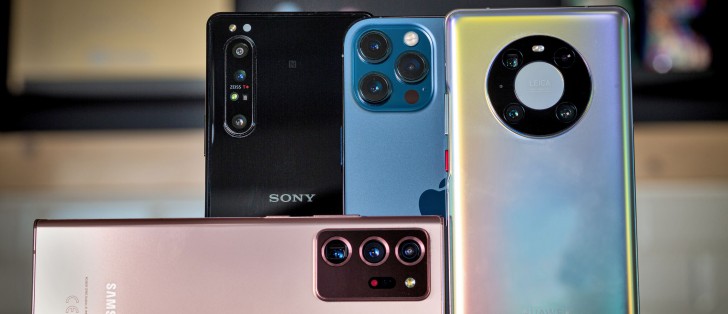Camera test: iPhone 12 Pro Max vs. Mate 40 Pro vs. Xperia 1 II vs. Galaxy Note20 Ultra

Low-light photo quality, ultra wide angle camera
The low-light performance of the ultra wides can actually be summarized relatively easily - one's great, the other three are okay. You can probably guess, but it's the Mate's big-sensor UW cam that is the least afraid of the dark and produces the cleanest, most detailed images with the widest dynamic range. Admittedly, it's still on the cold side with white balance, but at least it's consistent with the main cam.




Low light, ultra wide camera: Galaxy Note20 Ultra • iPhone 12 Pro Max • Mate 40 Pro • Xperia 1 II




Low light, ultra wide camera: Galaxy Note20 Ultra • iPhone 12 Pro Max • Mate 40 Pro • Xperia 1 II




Low light, ultra wide camera: Galaxy Note20 Ultra • iPhone 12 Pro Max • Mate 40 Pro • Xperia 1 II
The other three, while somewhat closely spaced, can still be ranked from okay to okay-ish in a Galaxy-Xperia-iPhone order, with the iPhone falling further behind if it gets particularly dark. The Note's shots can be noisy but do retain quite a lot of detail, and the dynamic range is nicely wide. The Xperia prioritizes noise reduction over detail, though it still manages to deliver some of it. The iPhone ranges from well detailed brightly lit subjects to downright smudgy ones in darker scenes and generally in the shadow areas.




Low light, ultra wide camera: Galaxy Note20 Ultra • iPhone 12 Pro Max • Mate 40 Pro • Xperia 1 II




Low light, ultra wide camera: Galaxy Note20 Ultra • iPhone 12 Pro Max • Mate 40 Pro • Xperia 1 II




Low light, ultra wide camera: Galaxy Note20 Ultra • iPhone 12 Pro Max • Mate 40 Pro • Xperia 1 II
In Night mode, things are a little different. The Mate goes for a 12MP 4:3 image in this mode, and that's a two-fold hit - lower resolution plus a further reduction in scene coverage because of the crop from the 3:2 sensor. On top of that, there's actually a reduction in dynamic range, specifically in the highlights. There's really not one scene where we prefer the Mate's Night mode ultra-wide shot over its regular Photo mode.



Ultra wide camera, Night mode: Galaxy Note20 Ultra • iPhone 12 Pro Max • Mate 40 Pro



Ultra wide camera, Night mode: Galaxy Note20 Ultra • iPhone 12 Pro Max



Ultra wide camera, Night mode: Galaxy Note20 Ultra • iPhone 12 Pro Max
That allows the iPhone and the Galaxy to, if not shine, at least appear competitive. There is, indeed, a significant improvement in the iPhone's results if you don't interfere with its auto Night mode, and that's why we feel that for its ultra-wide camera, it should be left ON at all times. You get much better shadow development this way and an overall better-exposed image, which is sharper on top of that.
The Note brightens things up, too and Night mode shots do have improved tonal properties, particularly the very dark ones. It's a bit of a hit and miss thing, however. It's the really dark scenes that benefit the most from Night mode in both dynamic range and detail, while the better-lit ones actually deteriorate on a pixel level when you use Night mode.



Ultra wide camera, Night mode: Galaxy Note20 Ultra • iPhone 12 Pro Max



Ultra wide camera, Night mode: Galaxy Note20 Ultra • iPhone 12 Pro Max • Mate 40 Pro



Ultra wide camera, Night mode: Galaxy Note20 Ultra • iPhone 12 Pro Max • Mate 40 Pro
Reader comments
- Hossien
- 28 Apr 2023
- cSx
No phone in the world can take pictures as well as a camera, a phone is something that is always available. The camera is not always available, but the phone is everywhere. If a random scene happens, the camera is not available to you, you have to ...
- Anonymous
- 03 May 2022
- fD9
imma tell you what, i know a thing or two about taking photos and i would take a proper camera over this
- Anonymous
- 06 Mar 2022
- Y7I
That's why I have a Sony RX100 VI for trips and outings when I want better pictures than with my phone. I can zoom in optically a lot and it has a nice picture quality. No need for a DSLR unless you are a paid photographer or need it for work or...